19 th September , 2019
On view through November 13th at iv Gallery, Los Angeles, CA.
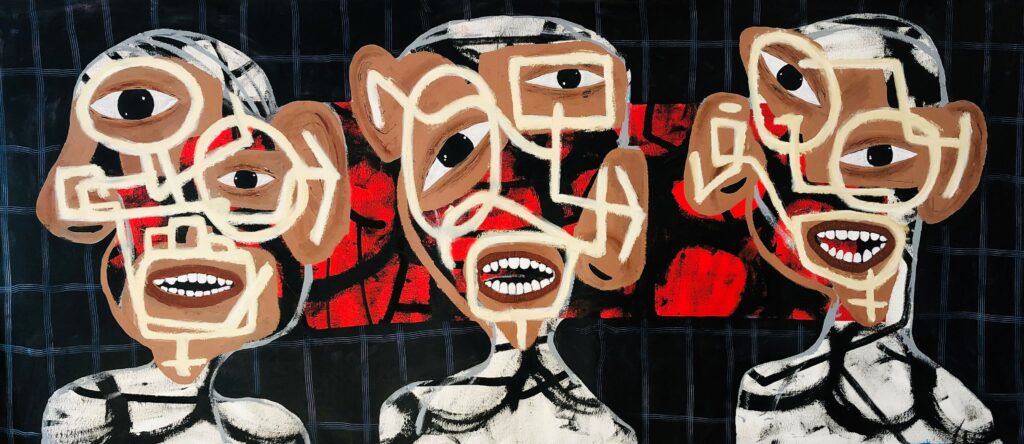
“Fractured” is based on the writings of David “Mr. StarCity” White, specifically a letter in the form of a poem to his idol, his big Brother. David’s brother has been suffering from mental illness for decades, specifically PTSD from an early life of gun violence and crime that landed him in jail and homeless on the streets. The body of work consists of a series of expressionistic portraits, each illustrating a line from the poem, while the many twisted, fragmented facets, and psychedelic aesthetics, give the viewer a glimpse of the world from a viewpoint of one who does not see the world around us as you do. “Fractured” represents a journey of acceptance, understanding, and healing to bring a big brother back to the insanity that we call normality.” – iv Gallery

We sat down with interdisciplinary artist David “Mr. StarCity” White to discuss his current exhibition Fractured. The NYC artist recently installed a compelling gallery show that discusses the challenging and intimate topic of mental illness at iv Gallery in LA. Like the work Mr. Star City creates, the heartfelt words of this interview are incredibly honest, raw, and telling. The ArtX team extends our utmost gratitude to Mr. StarCity for taking the time to create work and discuss a journey that millions of marginalized people experience, but for many reasons, are not able to openly share.
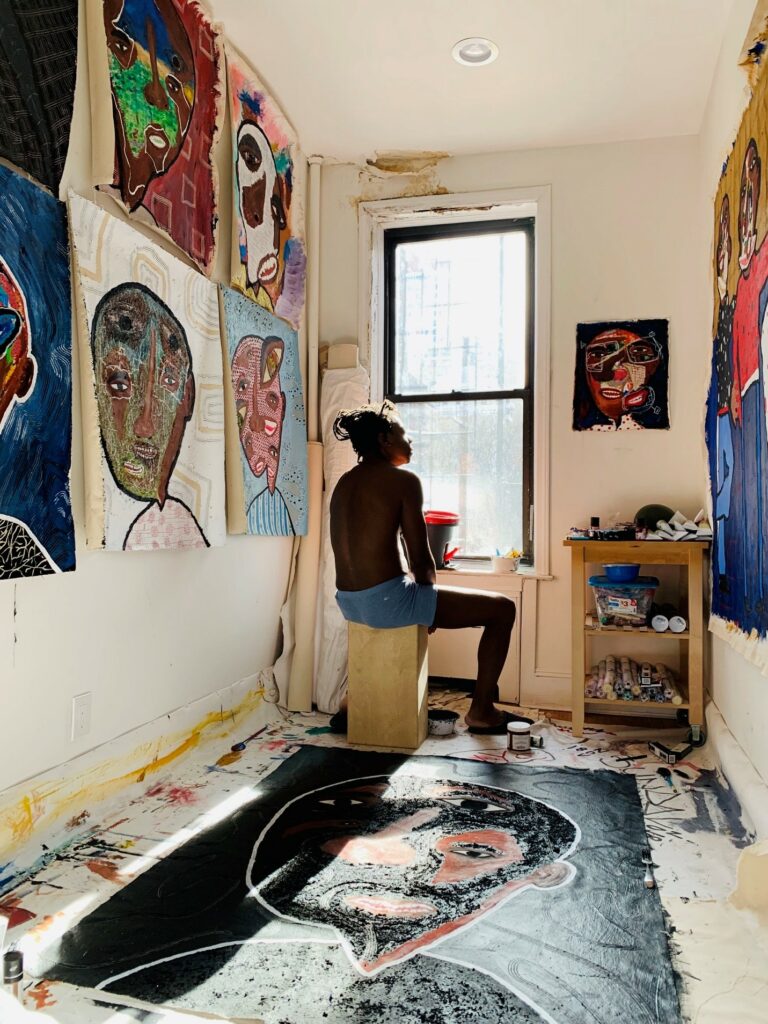
ARTX: What was the starting point for “Fractured?”
Mr. StarCity: As the letters between brothers Vincent and Theo Van Gogh have provided insight into the tortured mind of Vincent, they also demonstrate that the struggle of mental illness has long been a necessary matter to address. My older brother, the eldest of 19 siblings, has suffered from PTSD, schizophrenia, depression, bipolar disorder … suffering from his reality for almost 20 years now. In my attempt to better understand the source of my brother’s mental suffering, I realized that the starting point for “Fractured” started way beyond my own time. It begins with our existence here in this country and how we ended up in America. I refer to “Fractured” in terms of our identities and communities as humans, as a group of people, fractured in our families and in our relations to one another. We are all suffering from the societal circumstances manufactured and placed upon us by others. We don’t understand what it means to be here. We continue to be told to be a certain way without questioning why. So, I began exploring this concept of “Fractured” further as it has and continues to affect my own household.
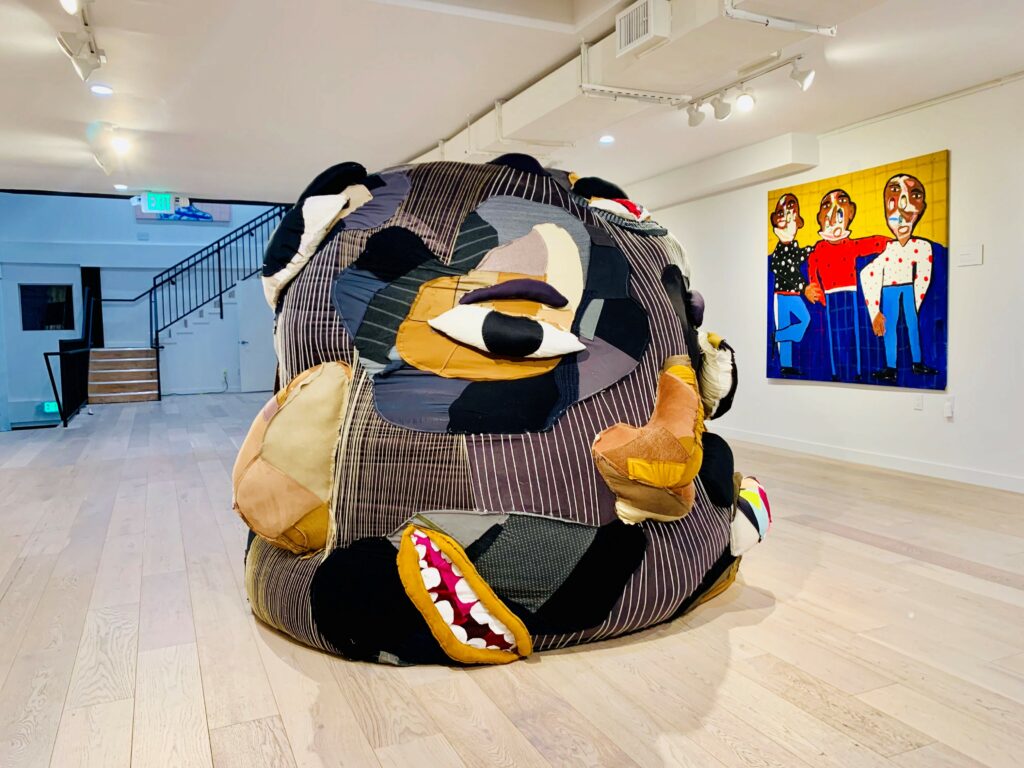
What made you want to address the issue of mental illness?
For 20 years, on and off, my brother has struggled with mental illness, lost in the streets, homeless and in and out of jail. Fortunately, my family and I have always bound together to help one another out, collectively taking my brother in whenever and wherever we could. It became clear to me that I needed to bring awareness and shed some light on this issue being that my encounters with mental illness are so personal and I can provide a platform for not only my brother and my family’s adversities throughout this experience, but also a platform for others to share their stories on mental illness. It’s been really challenging having to see my biggest idol, the only person I ever looked up to growing up, struggle through his fractured mental and emotional state. There is a stigma towards sufferers of mental illness, and I believe it is necessary to break this stigma in order for us to be genuinely more compassionate, sympathetic, patient and thus understanding of the obstacles they face. I’ve discovered that many people are undiagnosed or do not realize they suffer from PTSD, schizophrenia or bipolar disorder and that in itself is important to acknowledge. By breaking the stigma and making vulnerability more acceptable, it will help us open the dialogue and ultimately be more supportive of one another through a very complex matter.
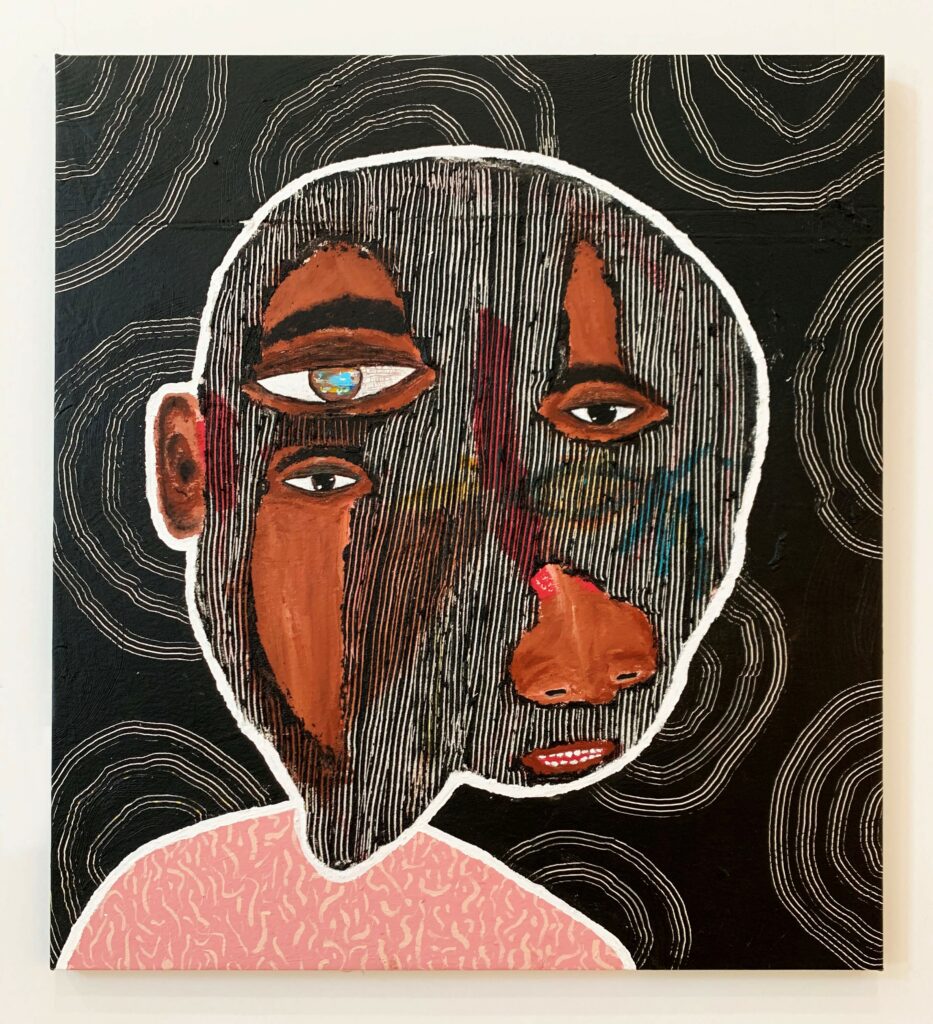
How did that influence your choice of palette in these various colors?
The color palettes in this series reflect my brother’s constant change in moods – one day agitated, another day calm, quiet, another day sad, depressed and confused. The pastel palettes represent his more current state of being. He is currently in North Carolina on my father’s farm where he is much more relaxed, subdued, quiet. While my brother was staying with me in New York City, he underwent a deep depression. During this time I think I subconsciously used a deeper color palette full of darker hues to reflect both his dark state and my struggle to uplift him from his depression.
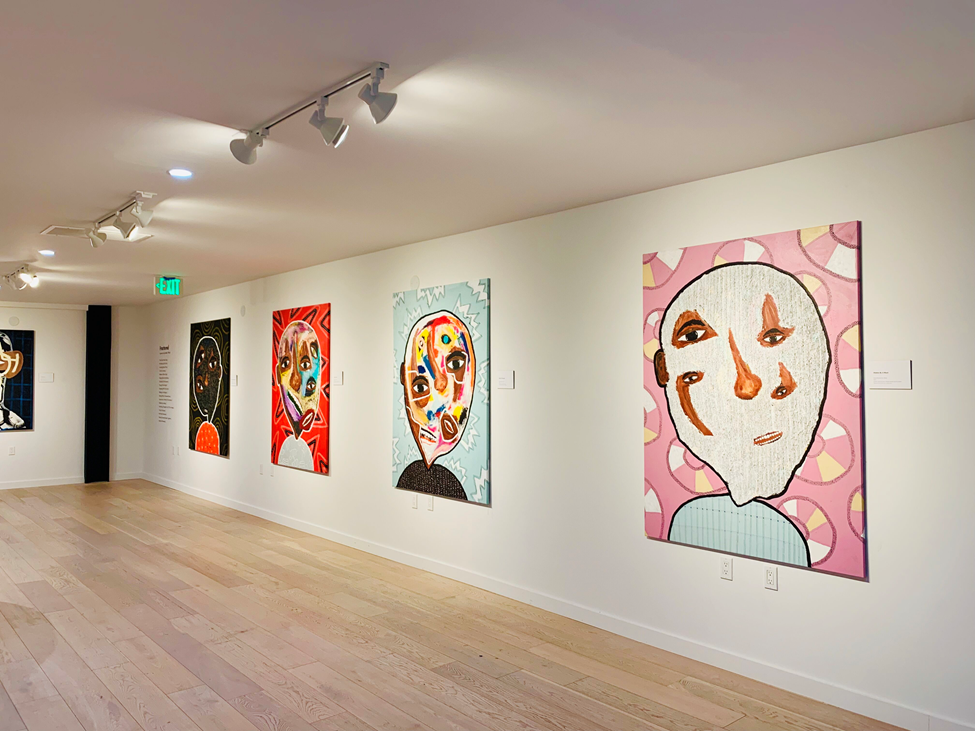
The installation is considered mixed media with the use of sculpture and film included, what was the driver behind these two mediums?
Being that mental illness is such a complex topic, it felt only natural to express my viewpoint in various mediums that could mirror the multi-faceted layers of mental illness. Paintings hanging in a room would not have done justice for such a close subject. Expressing my story through the outlets of painting, sculpture, poetry, video and performance art was how “Fractured” organically came about. Experimenting in various mediums allowed me the freedom to get my message across as sincerely as possible and helped me to illustrate a more detailed idea of my message.
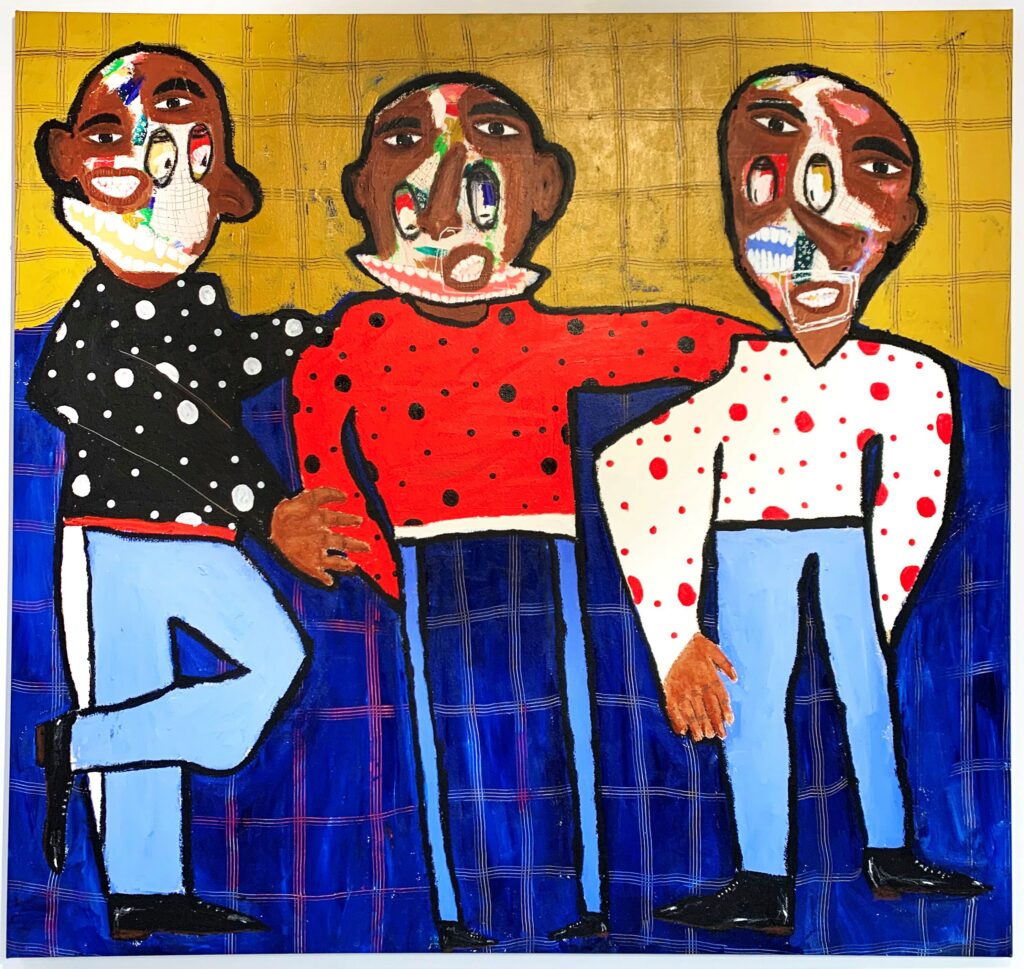
In the work, you relate environments to mental health, via landscape and portrait paintings. Why was it important for you to show how environment affects issues like anxiety and depression?
If you were to place a polar bear in the desert, that bear will be stripped of its natural habitat and resources. It will be in shock and its world will be no longer aligned with its natural state of being. When we are placed into an environment that doesn’t belong to us, it compromises our peace, makes us question our identity, and ultimately impact our sanity. Your environment can contribute to your mood, whether that be happy and calm or depressed and anxious. I believe our environments are at fault when it comes to our existence being compromised, and sometimes we do not have a choice on what that environment is. This goes back to the concept of “Fractured” and being in a country made up of several “fractured” civilizations and broken spirits.

How did you want to depict the inner world of your subjects?
I wanted to depict the inner world of my brother almost as an entrapment. What we see on the surface is not who he is. I know who my brother is: a truly strong, beautiful human being. In the works within this series, I have depicted him as hidden, masked, trying to escape the reality that has been built around him. It’s not that he exists in a different world from us. He exists in the same world we do, but his perspective, the attention he gives to certain things in this world is emphasized, sometimes dramatized to extremes, pushing him into paranoia. I want to show that sufferers of mental illness are beautiful beings that simply see the world differently than we do. And it truly takes patience and understanding to even begin to attempt to see the world in the light that they do.

How are you hoping viewers will react to the work?
My biggest hope is to stir patience, compassion and sympathy from viewers because without those you can’t have understanding. I hope that my viewers will leave with some understanding of the obstacles that sufferers and their family members experience. I want my viewers to break any of their own stigmas towards mental illness and to open up the dialogue and share their personal experiences, whether it is going through a traumatic experience or having a family member who is going through it. We need to be more accepting of these things and not turn a blind eye to them.
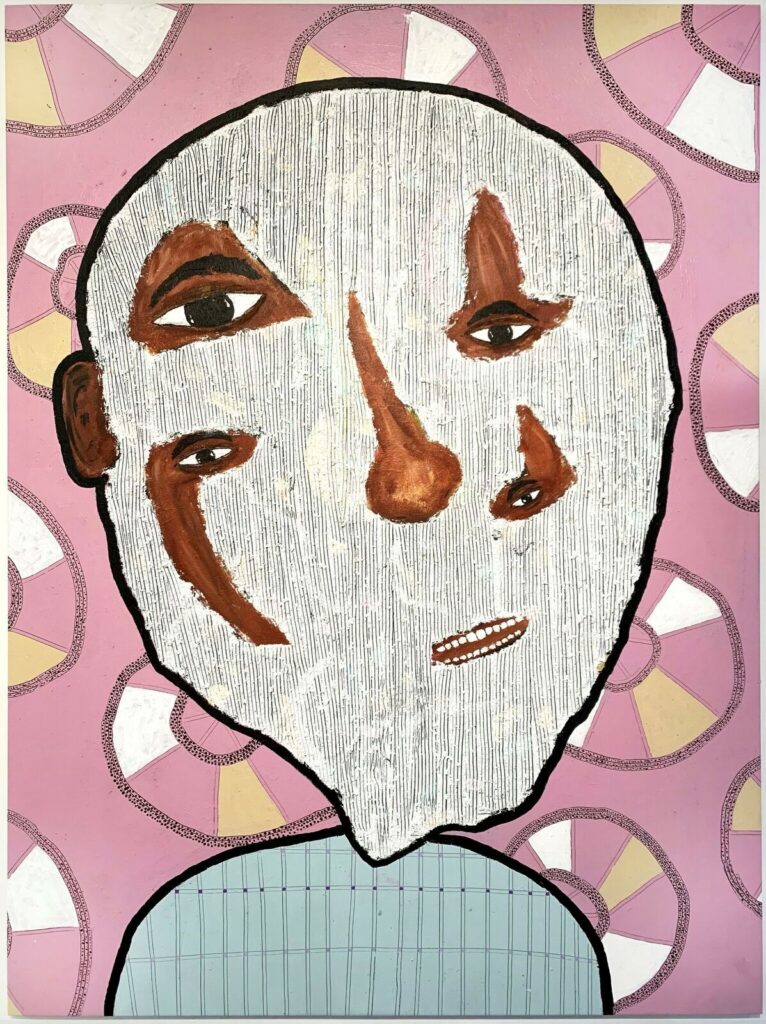
Considering your personal connection to the subject matter, was there one painting that was particularly challenging for you?
By the time the piece “Hidden By A Mask” was nearly at its completion, I felt it was one of the most beautiful pieces color-wise within the series. The colors reminded me of who my brother was – who he really is. I felt slightly conflicted, as it did not accurately represent the person as I know him to be today. I proceeded to cover the piece completely while leaving hints of the colors peeking through. I did this to represent the stigma we have towards the mentally ill in society. If I told you my brother has schizophrenia, that is all you would see in him face-to-face. “Hidden By A Mask ” is a metaphor for identity: beneath my illness – be it schizophrenia, diabetes, cancer – I am still a human. My brother is nothing more than a beautiful being, masked by an illness.
“Fractured, the long road back to insanity,” by David “Mr. StarCity” White.
On view through October 13th at iv Gallery, Los Angeles, CA.
Follow David “Mr. StarCity” White on Instagram at @mrstarcity